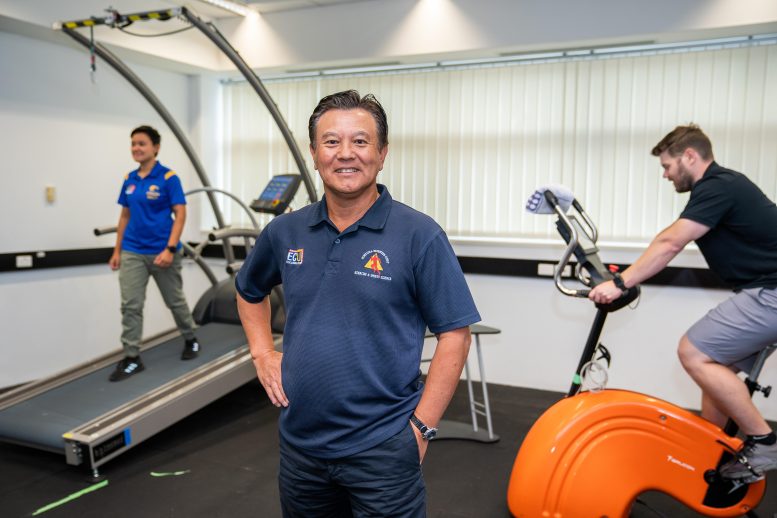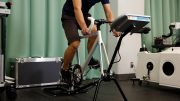
The study found that those who only lowered a weight experienced the same muscle strength and size improvements as those who raised and lowered weights, despite performing half the number of repetitions.
A recent study has revealed that a specific type of muscle contraction is the most effective at building muscle strength and size. This means that we may be able to achieve the same results by reducing our weight training routine by half.
Good news for those with busy schedules who find it difficult to fit in a gym workout: a new study from Edith Cowan University suggests that you may be able to reduce your weight training routine by half and still achieve the same results.
The research found that one type of muscle contraction is most effective at building muscle strength and size and that the emphasis should be on lowering weights rather than lifting them. The study involved groups of people performing three different types of dumbbell curl exercises and measuring the results. The research team also included researchers from Niigata University and Nishi Kyushu University in Japan, as well as Londrina State University in Brazil.
It found those who only lowered a weight saw the same improvements as those who raised and lowered weights — despite only performing half the number of repetitions.

Professor Ken Nosaka. Credit: Edith Cowan University
ECU’s Professor Ken Nosaka said the results reinforced previous research indicating a focus on “eccentric” muscle contractions — in which activated muscles are lengthened — is more important to increasing the strength and size of muscles, rather than the volume.
“We already know only one eccentric muscle contraction a day can increase muscle strength if it is performed five days a week — even if it’s only three seconds a day — but concentric (lifting a weight) or isometric muscle contraction (holding a weight) does not provide such an effect,” Professor Nosaka said.
“This latest study shows we can be far more efficient in the time we spend exercising and still see significant results by focusing on eccentric muscle contractions. In the case of a dumbbell curl, many people may believe the lifting action provides the most benefit or at least some benefit, but we found concentric muscle contractions contributed little to the training effects.”
Crunching the numbers
The study consisted of three groups who performed dumbbell curls twice a week for five weeks, plus a control group who did nothing.
Of the training groups, one performed eccentric-only muscle contractions (lowering weight), another concentric-only muscle contractions (lifting weight) and another performed both concentric and eccentric muscle contractions (lifting and lowering weight alternatively).
All three saw improvements in concentric strength, but this was the only improvement for the concentric-only group.
The eccentric-only and concentric-eccentric groups also saw significant improvements in isometric (static) strength and eccentric strength.
Most interestingly, despite the eccentric-only group doing half as many reps as those lifting and lowering weights, the gains in strength were very similar and the eccentric-only group also saw a greater improvement in muscle thickness, an indicator of muscle hypertrophy: 7.2 percent compared to the concentric-eccentric group’s 5.4 percent.
“Understanding the benefits of eccentric-focused training can allow people to spend their time exercising more efficiently,” Professor Nosaka said.
“With the small amount of daily exercise needed to see results, people don’t necessarily even have to go to the gym — they can incorporate eccentric exercise into their everyday routine.”
Putting it into practice
So how can we put this knowledge to use in the gym?
Using a dumbbell, Professor Nosaka recommends using two hands to help with the concentric (lifting weight) phase, before using one arm for the eccentric phase (lowering weight), when performing:
- Bicep curls
- Overhead extension
- Front raise
- Shoulder press
Using leg weight machines, Professor Nosaka recommends using the same concentric/eccentric technique when performing:
- Knee extensions
- Leg curls
- Calf raises
Looking after home bodies
Happily, Professor Nosaka says you don’t need gym weights to apply the same principles to a workout and has come up with several simple exercises one can do at home.
In the exercises, feel that the contracting muscles are gradually stretched from the start to the end of the range of motion.
After each eccentric muscle contraction, minimize the effort to go back to the starting position (i.e., concentric muscle contraction).
Repeat 10 times for each exercise.
Chair sit: From a half-squatting position, sit down slowly on a chair in three seconds, (narrower and wider stances will create different effects). If this is easy, try to sit down with one leg.
Chair recline: Sit on the front of a chair to make a space between your back and the backrest, recline back slowly in three seconds (arms can be crossed at the chest or hold at the back of a head).
Uneven squat: Stand behind a chair, lean to one side to put more weight on one leg, then squat down in three seconds.
Heel down: Still behind a chair, lean forward and raise your heels. Then, lift one leg off the ground and lower the heel of the other leg in three seconds.
Wall kiss: Lean against a wall with both arms fully extended. Bend the elbow joint slowly over three seconds until your face gets close to the wall.
Front lunge: Place one leg in front of the other and bend the knees deeper over three seconds.
Reference: “Comparison between concentric-only, eccentric-only, and concentric–eccentric resistance training of the elbow flexors for their effects on muscle strength and hypertrophy” by Shigeru Sato, Riku Yoshida, Fu Murakoshi, Yuto Sasaki, Kaoru Yahata, Kazuki Kasahara, João Pedro Nunes, Kazunori Nosaka and Masatoshi Nakamura, 15 September 2022, European Journal of Applied Physiology.
DOI: 10.1007/s00421-022-05035-w









Huh? If you want to lower a weight, you first have to raise it! Or perhaps we are supposed to hire someone to raise the weight for us so that we can then focus on lowering ti strongly? [lol]
The best way to do weight exercises is to maintain full control of the weight on both the raise & lower movements. Don’t just let gravity take over and drop the weight once you have raised it.